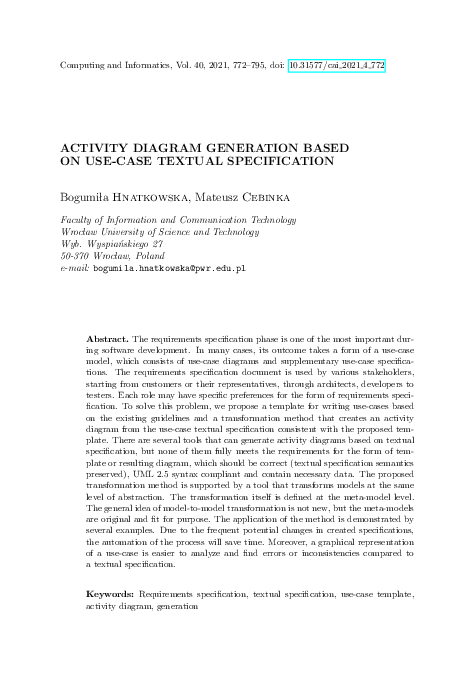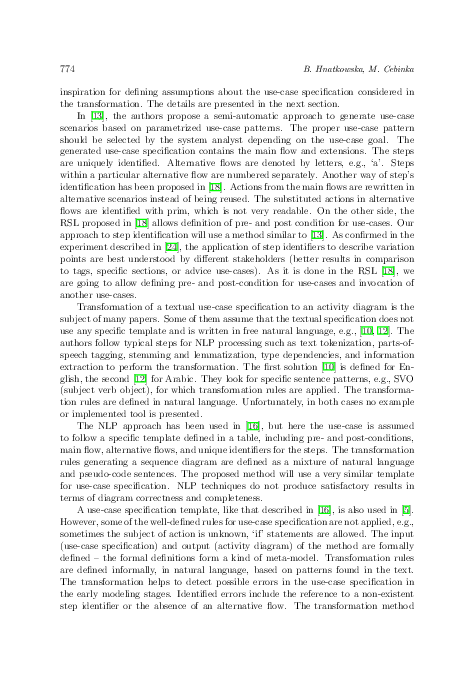Activity Diagram Generation Based on Use-Case Textual Specification
keywords: Requirements specification, textual specification, use-case template, activity diagram, generation
The requirements specification phase is one of the most important during software development. In many cases, its outcome takes a form of a use-case model, which consists of use-case diagrams and supplementary use-case specifications. The requirements specification document is used by various stakeholders, starting from customers or their representatives, through architects, developers to testers. Each role may have specific preferences for the form of requirements specification. To solve this problem, we propose a template for writing use-cases based on the existing guidelines and a transformation method that creates an activity diagram from the use-case textual specification consistent with the proposed template. There are several tools that can generate activity diagrams based on textual specification, but none of them fully meets the requirements for the form of template or resulting diagram, which should be correct (textual specification semantics preserved), UML 2.5 syntax compliant and contain necessary data. The proposed transformation method is supported by a tool that transforms models at the same level of abstraction. The transformation itself is defined at the meta-model level. The general idea of model-to-model transformation is not new, but the meta-models are original and fit for purpose. The application of the method is demonstrated by several examples. Due to the frequent potential changes in created specifications, the automation of the process will save time. Moreover, a graphical representation of a use-case is easier to analyze and find errors or inconsistencies compared to a textual specification.
reference: Vol. 40, 2021, No. 4, pp. 772–795


